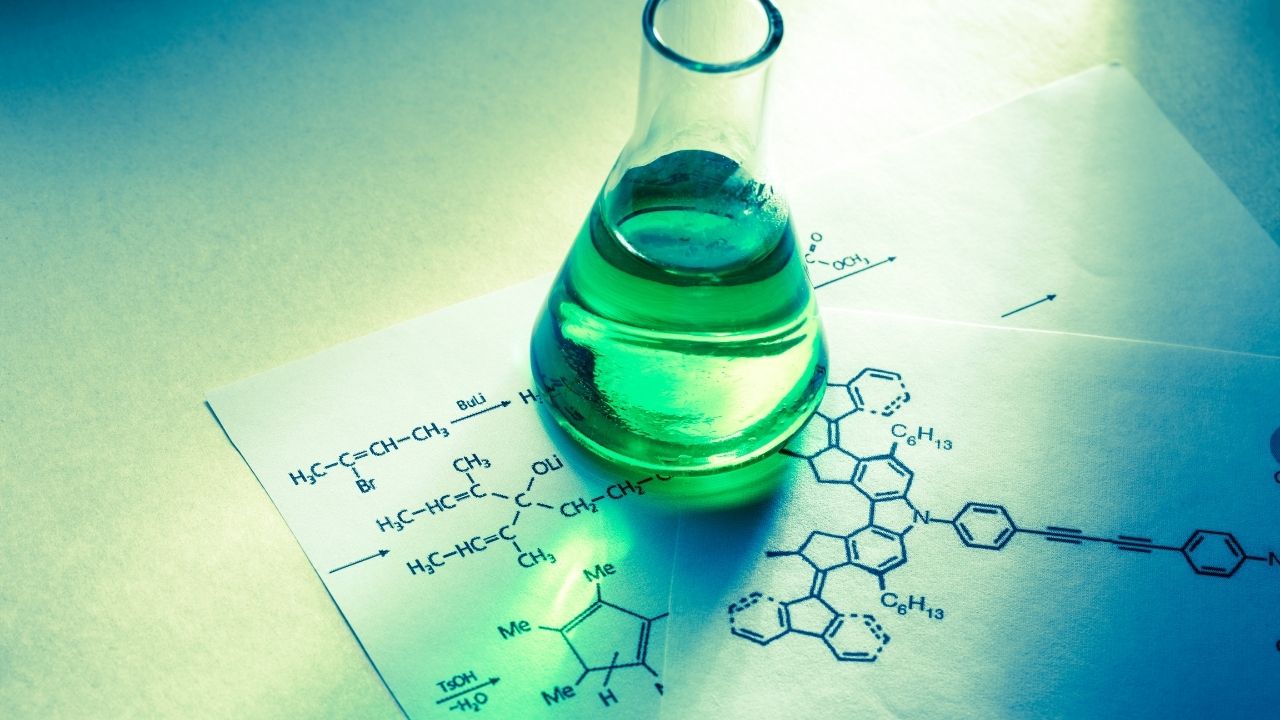Table of Contents [hide]
Introduction to Chemical Changes
Welcome to the fascinating world of chemical changes! Have you ever wondered what happens at the molecular level when substances undergo transformations? Chemical changes play a crucial role in our everyday lives, shaping everything from the food we eat to the materials we use. In this blog post, we will explore some examples of chemical changes and delve into their significance. So, fasten your seatbelts as we embark on an exhilarating journey through the captivating realm of chemistry!
Key Differences Between Physical and Chemical Changes
Understanding the difference between physical and chemical changes is crucial to grasp how substances transform at the molecular level. While both types of changes involve alterations in matter, they differ in their fundamental nature.
Physical changes are characterized by a rearrangement or alteration of the physical properties of a substance without changing its chemical composition. These changes can be observed through alterations in shape, state (such as melting or boiling), size, or texture. For example, when ice melts into water, it undergoes a physical change as its state changes from solid to liquid.
On the other hand, chemical changes involve transformations that result in the formation of entirely new substances with different properties. During a chemical change, bonds between atoms are broken and reformed to create new molecules. This process often gives rise to noticeable differences such as color change, production of gas bubbles, release or absorption of heat energy, or formation of precipitates.
One key distinction between physical and chemical changes lies in reversibility. Physical changes can typically be reversed by reverting back to the original conditions—for instance; melted ice can freeze again when temperature decreases. However, chemical reactions are usually irreversible—the reactants cannot readily revert back to their initial state once transformed into products.
Another important factor is that physical changes do not alter the identity or composition of a substance—they only affect its appearance or form temporarily—while chemical reactions result in new substances being formed altogether.
It’s worth noting that even though some physical changes may appear similar to certain aspects of chemical reactions—such as phase transitions like freezing or boiling—they remain distinct phenomena since no actual transformation occurs at an atomic level during these processes.
By understanding these key differences between physical and chemical changes, we gain insight into how matter behaves under various conditions—which is crucial for fields ranging from chemistry and biology to everyday life applications like cooking and cleaning!
Examples of Common Chemical Changes
Chemical changes occur when substances undergo a transformation at the molecular level, resulting in the formation of new substances with different properties. These changes are often accompanied by observable signs such as color change, gas production, or the release/absorption of heat. Let’s explore some examples of common chemical changes that happen around us every day.
One classic example is the rusting of iron. When exposed to oxygen and moisture, iron reacts to form iron oxide (rust). This not only alters the appearance of the metal but also weakens its structural integrity.
Another familiar example is combustion, where a fuel combines with oxygen to produce heat and light energy. The burning of wood or gasoline are prime examples of this chemical change in action.
Have you ever observed how fruits turn brown after being cut? This is due to an enzyme called polyphenol oxidase reacting with oxygen in the air, leading to oxidation and browning.
A less noticeable but important chemical change occurs during photosynthesis. In this process, plants convert carbon dioxide and water into glucose (a sugar) and release oxygen as a byproduct.
These examples highlight just a few instances where chemical changes take place all around us. Understanding these transformations helps us appreciate how matter can be transformed from one state to another through various reactions at the molecular level. By recognizing these changes, we can gain insights into everyday phenomena and even harness them for practical purposes!
Understanding the Role of Reactants and Products
Chemical changes occur through a process known as a chemical reaction, where reactants are transformed into products. Reactants are the substances present at the beginning of a reaction, while products are the new substances formed as a result of that reaction.
Reactants play a crucial role in determining what kind of chemical change will occur. The specific combination and arrangement of atoms within these reactant molecules determine how they will interact with each other during the reaction. This interaction can involve breaking or forming chemical bonds.
The products, on the other hand, represent the new substances that form after the reactants have undergone their transformation. These products often have different properties than the original reactants due to changes in their molecular structure.
In many cases, chemical reactions involve multiple steps and intermediate compounds before reaching the final product(s). Each step along this “reaction pathway” contributes to overall process efficiency and outcome.
By understanding how reactants behave during a chemical change and identifying key characteristics in resulting products, scientists can gain valuable insights into complex reactions occurring at atomic and molecular levels.
This knowledge is essential for various fields such as pharmaceuticals, materials science, environmental research, and more. It enables researchers to design more efficient processes for manufacturing drugs or developing sustainable energy sources by optimizing reaction conditions based on desired product outcomes.
Furthermore, understanding reactant-product relationships helps us make sense of everyday phenomena. For example, combustion reactions involving gasoline produce carbon dioxide gas (a product) which contributes to global warming when released into our atmosphere.
Observing these transformations requires careful observation using techniques like spectroscopy or chromatography. By analyzing changes in physical properties like color or odor or detecting new substances formed during a reaction using specialized equipment; we can identify whether a chemical change has occurred.
The Importance of Chemical Reactions in Everyday Life
Chemical reactions play a crucial role in our everyday lives, even if we may not always realize it. From the food we eat to the products we use, chemical changes are happening all around us. These transformations at the molecular level have far-reaching effects and contribute to various aspects of our daily routines.
One important application of chemical reactions is in medicine. Pharmaceuticals are developed through careful manipulation of chemicals, aiming to create compounds that can treat diseases or alleviate symptoms. Without these chemical reactions, many life-saving medications would simply not exist.
Another area where chemical reactions make a significant impact is in cooking and baking. When we apply heat or mix ingredients together, new compounds form, resulting in changes in taste, texture, and appearance. Whether it’s caramelization during frying or fermentation during bread-making, understanding these chemical processes allows us to create delicious dishes.
Furthermore, household cleaning products rely on chemical reactions for their effectiveness. The reaction between an acid (such as vinegar) and a base (like baking soda) produces carbon dioxide gas which helps break down stains and grime. This knowledge empowers us to keep our homes clean and hygienic.
In addition to these examples, fuel combustion engines used in cars also involve various chemical processes that convert gasoline into energy for transportation purposes. Similarly,
chemical reactions occur within batteries powering electronic devices like smartphones,
enabling them to function efficiently.
Also read: Great Gatsby Theme: The Illusion of the American Dream in 1920s Society
How to Observe and Detect Chemical Changes
Observing and detecting chemical changes is an important skill that allows us to understand the transformations happening at the molecular level. By being aware of the signs and indicators, we can better comprehend these reactions and appreciate their significance in our daily lives.
One way to observe a chemical change is through visual cues. For example, if you mix two substances together and notice a color change or formation of a precipitate (a solid that forms when two liquids react), it indicates that a chemical reaction has occurred. These visible changes provide valuable insights into the transformation taking place.
Another method is monitoring temperature changes during a reaction. Some reactions absorb heat from their surroundings, resulting in a decrease in temperature. Conversely, other reactions release heat energy, causing an increase in temperature. By using thermometers or conducting experiments under controlled conditions, scientists can detect these thermal variations as evidence of chemical changes.
Detecting gas production is also crucial for identifying chemical reactions. When certain substances combine or decompose, they may produce gases as byproducts. Examples include effervescence (the bubbling observed when carbon dioxide gas escapes from soda) or the release of hydrogen gas when metals react with acids. These gaseous emissions indicate that a chemical transformation has taken place.
In addition to visual cues, temperature changes, and gas production, other factors such as odor and light emission can signify chemical changes too. Some reactions emit distinct odors due to volatile compounds formed during the process – think of the smell produced by burning wood! Similarly, chemiluminescence occurs when chemicals give off light without producing significant amounts of heat.
By honing your observation skills and paying attention to these different indicators mentioned above – color changes, precipitation formation, temperature fluctuations,gas production,and odor/light emission- you will be able to identify various examples of chemical changes occurring around you every day!







